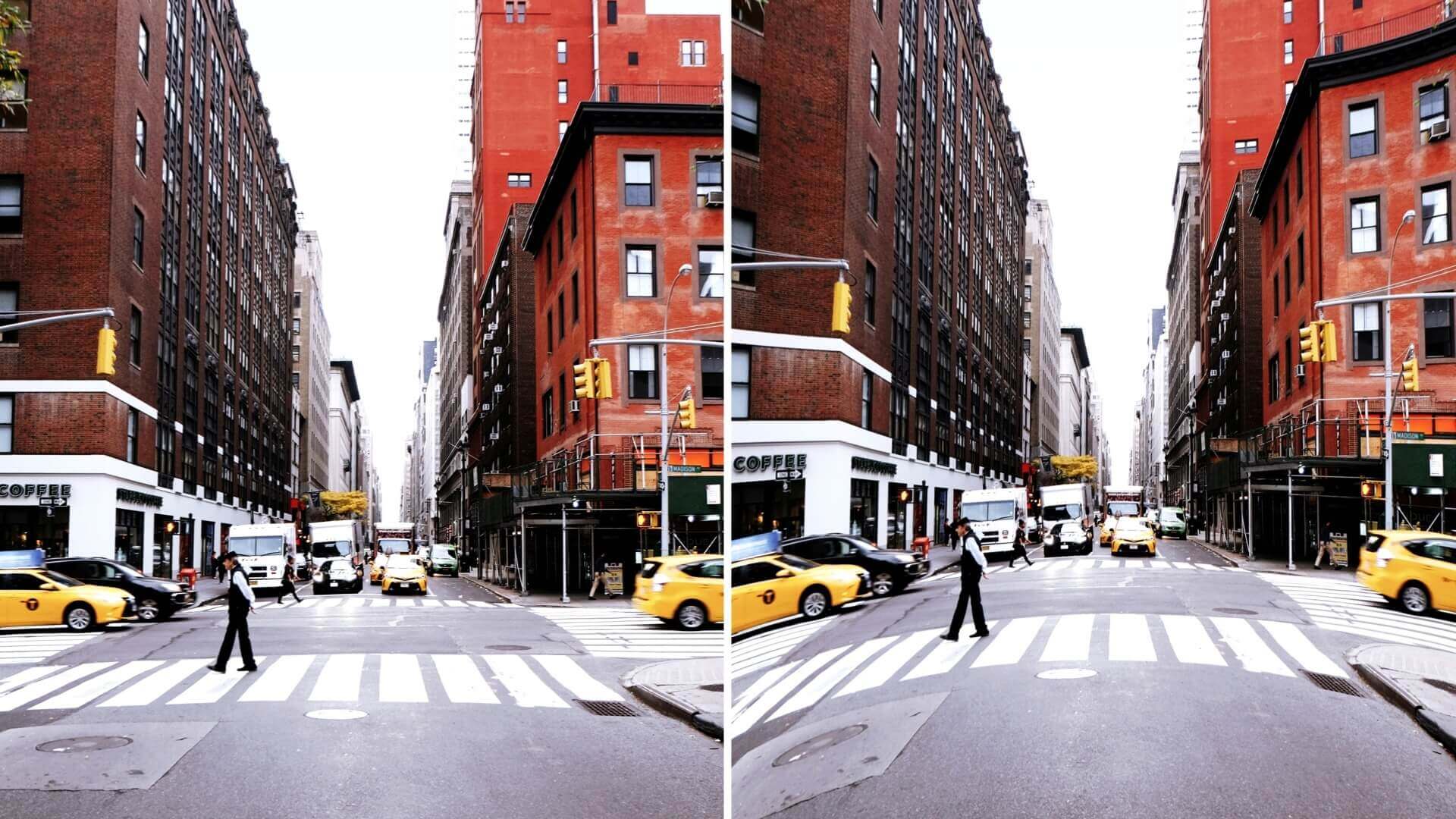Photography is more than just clicking the shutter. It’s about truly understanding your camera and the lenses you use as tools. One aspect that often gets overlooked is lens distortion. It’s a common occurrence, yet many photographers are unaware of its impact on their photos.
Understanding lens distortion can actually help you improve the quality of your images and give you more control over the final result.
What is Lens Distortion in Photography?
First, let’s define lens distortion
Lens distortion, at its core, is a deviation from the 'ideal' image – typically, one that is geometrically perfect. Before we can analyze the intricate aspects of managing lens distortion, it's key to establish a clear understanding of what it actually is.
LENS DISTORTION DEFINITION
What is lens distortion?
Lens distortion, in simple terms, is a deviation from the perfect image caused by the optical design of a lens. This deviation results in the image being distorted in a way that differs from the actual scene. The amount and type of distortion depend on the lens design, with wide-angle lenses typically exhibiting more distortion than telephoto lenses. But this depends on the manufacturer and when it was made.
Types of Lens Distortion:
- Barrel
- Pincushion
- Mustache
What Causes Image Distortion In Lenses?
What causes lens distortion?
The science behind lens distortion lies in how a lens works and the path of light as it interacts with the lens. When light enters the lens, it undergoes a process called refraction, where its direction changes due to the change in medium.
Ideally, all the light rays should converge at a single point on the sensor, resulting in a sharp and undistorted image. To understand this visually, check out our breakdown on types of camera lenses.
Ultimate Guide to Camera Lenses • Subscribe on YouTube
However, due to the inherent imperfections in lens design and the curved nature of the lens, light rays often converge at different points, causing image distortion. These distortions can manifest as barrel distortion, where straight lines appear curved outward, or pincushion distortion, where straight lines appear curved inward.
Lens distortion can significantly affect your photography, particularly if you're shooting architecture or any subject with straight lines. The curving effect of barrel or pincushion distortion can make buildings appear to lean or warp, which can be visually distracting.
Lens Distortion Examples
However, not all effects of lens distortion are negative. In some cases, it can add a unique perspective to your photos, particularly in wide-angle landscape photos or street photography. The bulging effect of barrel distortion can emphasize scale and depth, making your images more dynamic and engaging.
What is Barrel Distortion in Lenses?
Types of Lens Distortion
There are three primary types of lens distortions. Understanding and recognizing these distortions is essential for photographers and videographers. The three types of lens distortion are barrel distortion, pincushion distortion, and mustache distortion.

Types of Lens Distortion
Barrel Distortion
Barrel distortion is common in wide-angle lenses and is characterized by the image appearing to bulge outwards from the center. In barrel distortion, straight lines near the edges of the frame appear curved outward.
Pincushion Distortion
Pincushion distortion is often seen in telephoto lenses. Here, the image appears pinched at the center, and straight lines near the edges of the frame curve inward.
Mustache Distortion
Mustache distortion, also known as complex distortion, is a combination of barrel and pincushion distortion. The image appears to warp in a wavy pattern, with lines curving outward near the center and inward at the edges.
While lens distortion can be a unique quality you’d like to keep within your photography, it can also be one that you want to know how to mitigate as much as possible.
Related Posts
What is Lens Distortion and How to Avoid It
Mitigating Lens Distortion
Lens distortion is a common characteristic of all types of camera lenses to varying extents. There are several effective techniques you can employ to minimize its impact and achieve optimal image quality. These include careful lens selection, proper shooting techniques, and post-processing adjustments.
Choose the Right Focal Length
Different focal lengths exhibit different levels of distortion. Wide-angle lenses tend to have more distortion, so for subjects with straight lines, consider using a telephoto or standard lens.
35mm vs 50mm vs 85mm Lens Comparison for Portrait Photography
Positioning
Composition is also a factor. Position your subject in the center of the frame where distortion is usually least noticeable. For example, in portrait photography, frame your subject in the center of the frame for the least amount of lens distortion on your subject's face.
Post-Processing
Many photo editing software programs, like Adobe Lightroom and Photoshop, have lens correction tools that can automatically correct distortion based on the lens used.
Lens distortion is an inherent characteristic of camera lenses that can significantly affect your photography. While it can be detrimental in certain contexts, such as architectural photography, it can also add a unique perspective to images when used intentionally.
Remember, in photography, knowing how to manage imperfections can often be as important as seeking perfection. Embrace the artistic possibilities that lens distortion offers, and use it as another tool to create compelling images. The world of photography is as much about control as it is about creativity.
Up Next
How Do Camera Lenses Work?
Now that we've explored lens distortion, its types, and how to mitigate its effects, it's time to look deeper into the world of lenses. In our next article, we break down how the camera lens works with light and capturing images.
Up Next: Inside Camera Lenses →
Showcase your vision with elegant shot lists and storyboards.
Create robust and customizable shot lists. Upload images to make storyboards and slideshows.
